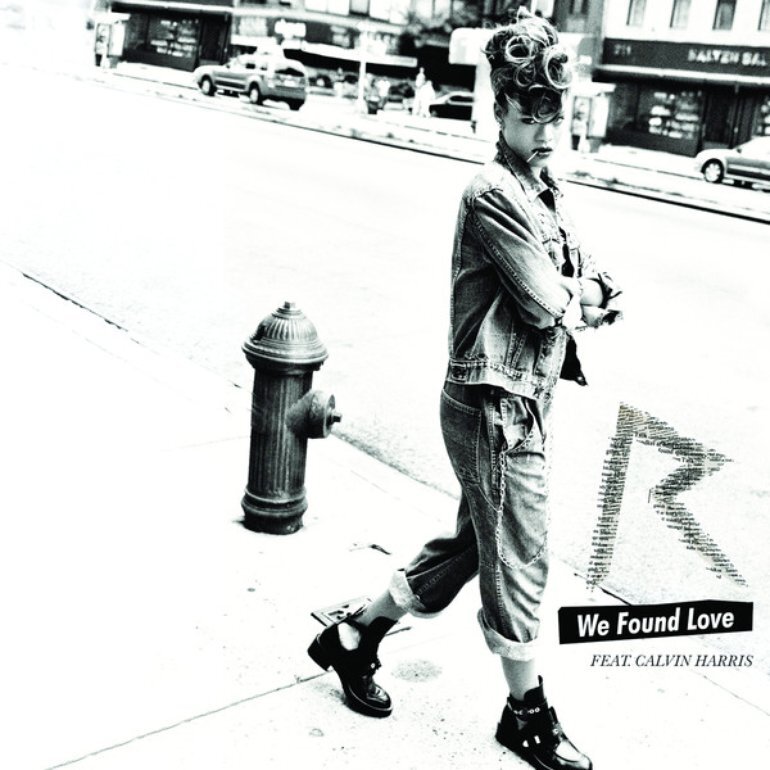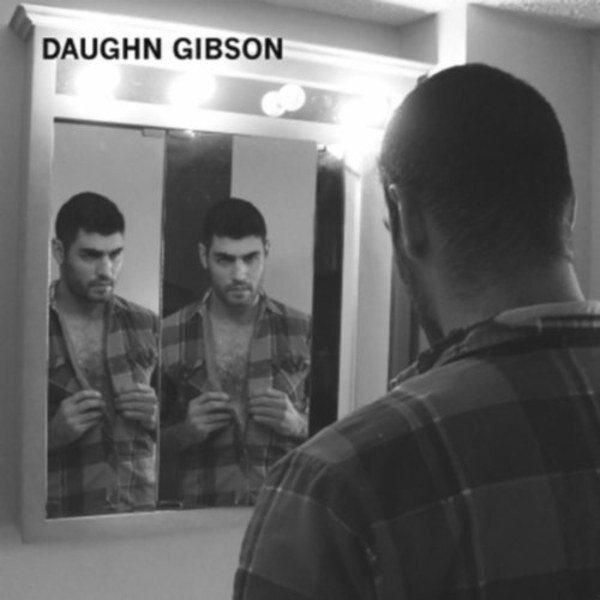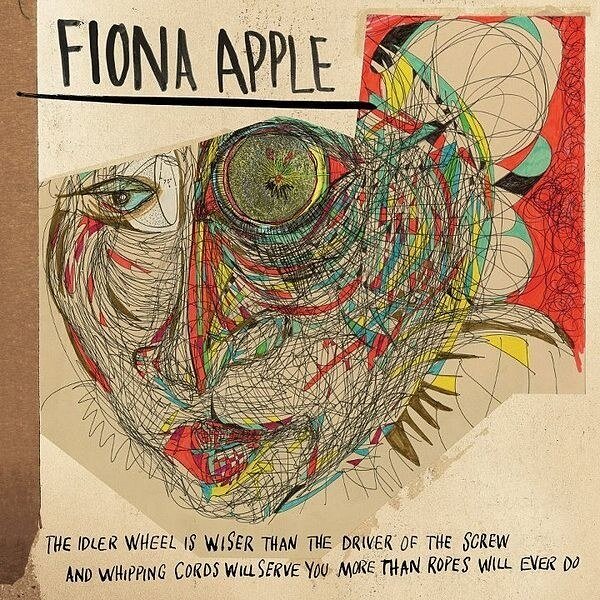Before we talk about music, trends, favourites, un-favourites, tragedies and triumphs, there’s one big question we need to ask about the past decade, which no one seems to have an answer for: what the hell are we supposed to call it? Everyone understands what the 90s, the 50s and the 80s are. It helps that they’ve got a catchy name. The 2000s just-about got away with being called ‘The Noughties’, but ‘the 2010s’? I have an idea: the Frenzies.
This decade transitioned from anxious to hysterical — first gradually, then all at once. Meanwhile, our consumption of art became ravenous and lightning-fast. We burned through fads so fast the word ‘era’ was in danger of losing all meaning. The decade’s dominant art-form was the meme — a medium so pervasive they’ll probably be studied at most universities by 2030, and so shallow that nearly every big thing exploded and vanished in under a week.
Meanwhile, the pitfalls of this surface-level engagement with the world manifested in disastrous democratic decisions, slow arduous attempts to undo the damage and a global doubling of antidepressant prescriptions.
If I sound cynical and defeatist, I don’t mean to. As this agonising decade meanders shambollicaly to a close I’m really quite optimistic. The aforementioned rate of mental illness is a canary in the coalmine, and the fierce counter-protests and steady decline of social media are signs that the world is not working and we’re waking up. We, as a species, are more in tune with politics, environmentalism, corruption and injustice than ever before. If people are to engage fervently in making the world better, catastrophic mistakes must be made. The threats have to be real, and if we do things right, The Frenzies will one day be seen as a cautionary tale, rather than the beginning of the end.
Science provides the tools for changing the world, but the motivation, ideas and urgency for doing so come from art. There are people out there who think that movies and music and video games are mindless distractions, and those people are only right to a very limited degree. These things are extremely powerful and they have a responsibility to enhance our engagement with the world.
Actor Tony Curtis once said that watching Cary Grant taught him ‘how to behave with a woman, how to get dressed at night, how to go to a restaurant and order dinner’. The Beatles defined the 60s just as much as the moon landings did. To sum up this preamble, the phrase ‘Enjoy responsibly’ shouldn’t just be limited to alcohol labels. Here is the music that defined the The Frenzies for me, for better, for worse, and for the future.
2010
Reality Sugar-Pills:
Deerhunter — Halcyon Digest
We couldn’t have predicted the mess that the ensuing decade became. That being said, Deerhunter’s lush basement-rock opus Halcyon Digest was a vital lesson in questioning the past. As pretty as it often is, these cobwebbed songs make trauma and nostalgia sing with the same voice. ‘Do you recall,’ breathes Bradford Cox in the opening lines, ‘waking up on a dirty couch?’ Most of us have done that a lot in our lives. But can you remember how often you were glad to be there? The music itself never quite settles in the realms of joy and pain. While there’s a certain familiarity about their concoction of 70s AM pop, 90s shoegaze and 60s garage, there’s an effortless mystery that breathes out of every note, like dust from loose floorboards.
Try: Fountain Stairs
Prestigious Collages:
The Books — The Way Out
Thanks to an unprecedented access to stock footage, user-submitted videos and general internet lunacy, it’s a golden age for cut-and-paste artists. The Way Out is a shining example of how these materials can be woven into music. That being said, it also sounds as if The Books didn’t care all that much for the internet. The myriad of samples have been scavenged from old audio and video tapes — the kind you see in charity shop bargain bins with sun-bleached covers. Self-help and hypnosis lectures, answerphone messages, smack-talking toddlers, televangelist sermons and Gandhi are all instruments here. The uncredited voices have a tangible grubbiness to them, contrasting with the immaculately strange electo-damaged folk music. It would prove to be their final record, but it remains their most inspiring, poignant and purposeful.
Try: Chain of Missing Links
Power, Pomp and Penis-Pics
Kanye West — Runaway
As annoyed as I am with inevitably mentioning Mr Expensive-Pillows-Are-So-Hard-To-Sleep-On, Kanye West’s My Beautiful Dark Twisted Fantasy really was a game-changer. The greatest thing about it is that it challenged the attention span of big-game pop music, particularly with ‘Runaway’. A nine-minute single (or 5-and-a-half for the radio edit) from one of the biggest pop stars on the planet, and he didn’t fall flat on his face? It’s as good as that achievement demands. A tirade of self-loathing swinging between between funny, uncomfortable and righteous, while Rick James’s disembodied voice shouts like an angry father. My Beautiful Dark Twisted Fantasy without ‘Runaway’ would be like Sgt Pepper’s Lonely Hearts Club Band without ‘A Day in the Life’ — it’s a vulnerable fourth-wall break that allows you to understand the dream.
2011
Drop That Drop
Rihanna and Calvin Harris — We Found Love
Maybe the most influential song from the decade’s first half, ‘We Found Love’ became the official blueprint for the lazy faux-eurphoric EDM. That revving synth-drop was so depressingly effective every top-40 producer insisted on using it at any wretched opportunity. That being said, as much as I really loathe this song, its dominance was inevitable. MTV was long-gone, radio was dying fast and Spotify hadn’t quite picked up the slack, so how could new music be promoted to fresh ears? Where else but the club. I hated clubs, and yet, I’m almost nostalgic for ‘We Found Love’, if only because it makes me remember a time when I actually went out. Then again, I didn’t go out all that much, largely because of music like this.
James Dean Goes to Hell
Dirty Beaches — Badlands
When we talk of escapism, is it the desire to be somewhere else, or to be someone else? To show the world through a stranger’s lens – in all its distortions, fears and curiosities – is the goal of many a film-maker. The fact that Alex Zhang Hungtai’s ‘movies’ don’t have moving images shouldn’t penalise him in this category. In his own words, ‘the sound is the leading man’. The hero of Badlands drives a car in desperate need of an oil change; his nose and throat are clogged with soot, but he can still sing like a battlescarred teen-idol (even when he’s having a breakdown in a roadside dustbin). This is rock n roll as heard by unhinged ears. Romance, lust, malice and anxiety are here, warped but vivid, buried under a veil of monochrome celluloid. What’s more, the narrative is incomplete. Ending just as the danger is at its least tuneful and most potent, our obscure leading man vanishes just 27 minutes after we meet him, and is all the more tantalizing for it.
Try: Lord Knows Best
Salty Fingers Breaking Fresh Bread
King Creosote & Jon Hopkins — Diamond Mine
The guys at my local record store used to sell a copy of Diamond Mine every time they played it. This was such a dependable happenstance that it was their best selling album for two straight years. Music this emotionally heavy is rarely so easy to enjoy. Jon Hopkins’ glacial soundscapes recall a Scottish fishing village so vividly it borders on cinematography. It also makes King Creosote’s songwriting shine all the brighter. The songs ache with ancestral grief, and yet, as he sings, it’s as if the wounds are being drawn out like a splinter. The final result can unobtrusively silence a room within a few minutes, and can keep it silent until the end.
Try: Bubble
History of another Future
The Beach Boys — The SMiLE Sessions
Even though Brian Wilson’s masterpiece was never released, the mere idea of it was influential. Many disciples channeled their dreams of what might have been into records of their own, and bootlegs compiled from scavenged outtakes circulated among fans. SMiLE is, was, and always will be unfinished, but four decades after its scheduled release, The SMiLE Sessions is the closest we’ll ever get. The result is heavenly. Like its closest sibling Sgt Pepper’s Lonely Hearts Club Band, this record blurs so-called high-brow and low-brow culture into an immaculate collage. In fact, it feels a whole lot stranger than Sgt Pepper. Thanks in no small part to the surreal lyrics of Van Dyke Parks, The SMiLE Sessions is a thoroughly holy matrimony of Walt Whitman, Looney Tunes, and Americana from coast to coast. Even after everyone tried to make their own version, there’s simply nothing like it.
Try: Surf’s Up
2012
This Is Pop
Carly Rae Jepsen — Call Me Maybe
It was November, and I was having the most miserable night out of my life. I’d been dragged to a vast and vile London club stuffed full of snotty nitwits who thought nothing of calling you a cunt without provocation. I had my first ever cigarette that night thinking, ‘well… maybe this will help?’ It didn’t. Towards the end of the night, I sank into a chair, hoping to blend into the background until my friends got bored. It didn’t take me long to realise I was finally hearing that ‘Call Me Maybe’ song that people had been making memes of for the past 2 months — and it was brilliant. Those zing-zing keyboards, her nervous-happy singing, the fact that she was telling someone to ‘call’ her as if it wasn’t the age of Facebook stalking and cry-wanking — dear God, I get it! Despite being downcast and alienated in a crowd of hundreds of people with no escape, that was the moment I stopped writing off mainstream pop on principle. Like all music, most of it is bad, but some of it is ‘Call Me Maybe’.
Black and white neon
Daughn Gibson — All Hell
This is just a tragedy. After his low-profile debut album, electronic-country troubadour Daughn Gibson’s career was systematically dismantled by bad luck and bad decisions. His mediocre sequel flopped like a sack of used lube and was backed by one of the worst videos of all time. The listeners and hype melted away. It’s a shame that this could happen after such a promising debut — but All Hell isn’t ‘a promising debut’. All Hell is an unrecognised classic. A brief, cinematic and seductive record that uses its limited budget to its advantage, like a lo-fi Lynchian dream. Gibson invokes rainwashed monochrome streets, loving parents, disappointing sons, worried daughters, undiagnosed mental disorders, technicolor love affairs, fire, brimstone, sex on steaming car bonnets, and wounded optimism. He touches on his scenes briefly and memorably, leaving the songs to bloom long after they’ve finished. So many years and so many plays after I first found it, it still blooms. You can read about more albums on this list if you like but this is my favourite. Go find it. Or if I ever give you a lift anywhere, I keep spare copies in my car because everyone always wants to know what it is.
Try: Tiffany Lou
Winter In Hell
Swans — The Seer
This decade, only Matthew McConaughey and erectile dysfunction made more impressive comebacks. As underground legends in the 80s and 90s, Swans had influenced scores of bands, from acknowledged greats like Nirvana and Nine Inch Nails to cult heroes like Godspeed and Supersilent. They are, nonetheless, inimitable. After eleven albums of industrial, folk, post-punk psych-rock and tape experiments, Michael Gira and his band turned in ‘the culmination’ of all music he had ever made. Its intensity, ambition, and confrontational lunacy is jaw-dropping. The listener’s patience is tested over and over, pummelling the senses with monotony, before the eventual reward of transcendental out-of-body ecstasy (for some). The Seer is the best kind of ‘experimental’ record — the kind with purpose, and so much to add to the conversation, even if everyone in the room despises it.
Try: Mother of the World
Warm Mist On Wet Grass
Mirrorring — Foreign Body
I might not write much here, simply because looking at the cover is all you need to know. Look at it. It sounds like that. The first and only collaboration between ambient-folk greats Liz Harris (Grouper) and Jesy Fortino (Tiny Vipers), Foreign Body has a geothermal rumble and hiss underneath it. There’s a melancholy here, but even at its saddest, its tones are comforting, soft and deep. At times, the singing sounds like melodic pillow-talk. Elsewhere, they sound like lone forest sirens. As for the music itself, neither person in Mirrorring has made anything quite as enveloping as this.
Try: Fell Sound
Brain Hiccups and Body Rhythms
Fiona Apple — The Idler Wheel…
In the past 23 years, Fiona Apple has released four albums. This is frustrating, but it’s easy to quiet your impatience when you consider the results. Would you prefer Christmas dinner from the oven or the microwave? The Idler Wheel… ( somehow only the second-longest title in her catalogue) is an intensely rhythmic reinvention of the singer-songwriter album. Apple produced it with drummer Charley Drayton, and the pairing is exceptional. Drayton is a veteran who has worked with everyone from The Rolling Stones to The B-52s, but I’m willing to bet money that he really relished working on this. It’s a best-case-scenario of creative freedom — the kind that could only have happened in secret without a major record label’s knowledge.
The whole album creaks and rumbles like a trebuchet. Melody, rhythm and ambiance tessellate into a singular primal unit. This only further highlights Apple’s songwriting, which is at once more tender and more barbed than it’s ever been. Her tone slithers between defiance and shame, love and anger, while never quite landing on any of the above. Hers is a brain at war with itself and the world. That being said, this is far from a worrying listen. Fiona Apple may detail psychological unrest that most of us will never know, but she has never ever been ready to give up. Her forays into the darkness only widen the aperture of her heart — and, by extension, ours.
Try: Daredevil
A Face Being Eaten By a Jungle
Scott Walker — Bish Bosch
Back in the 60s, Scott Walker of The Walker Brothers was a golden-haired teen idol whose fandom rivalled that of The Beatles. This album samples bowel movements. 45 years is a long time. Bish Bosch is not a joke (although there are funny moments). This is one of the scariest albums ever made — an existential nightmare obsessed with decay, toilet humour, colonialism, fascism, insects, and the nauseating flaws of humanity. It’s a long way from pop, it’s a long way from classical. Instead, the closest art-form this resembles is experimental theatre, cross-bred with poetry and visceral sound design.
And what poetry! He seems thoroughly bored with beauty, and is instead obsessed with mapping the infinite depth of ugliness, in all its absurdity and horror: ‘Shit might pretzel Christ’s intestines’, ‘Like a face being eaten by a jungle’, ‘You’re so boring you can’t even entertain doubt’, ‘Here’s to a lousy life’, ‘Cattle are slaughtered, entrails examined, spread out across the moon’, ‘Nothing clears a room like removing a brain’. Speaking of clearing a room, the music follows suit: machetes are sharpened, detuned dogs bark, steel plates cave inwards and (lest we forget) there’s actual farting. True to its title, this is a Hieronymus Bosch gallery come to life, in all its cerebral and stomach-churning thrills.
Try: Epizootics!
Part II (2013-14)
Part III (2015-16)
Part IV (2017-19)
Words by Joe Anthony Hill














